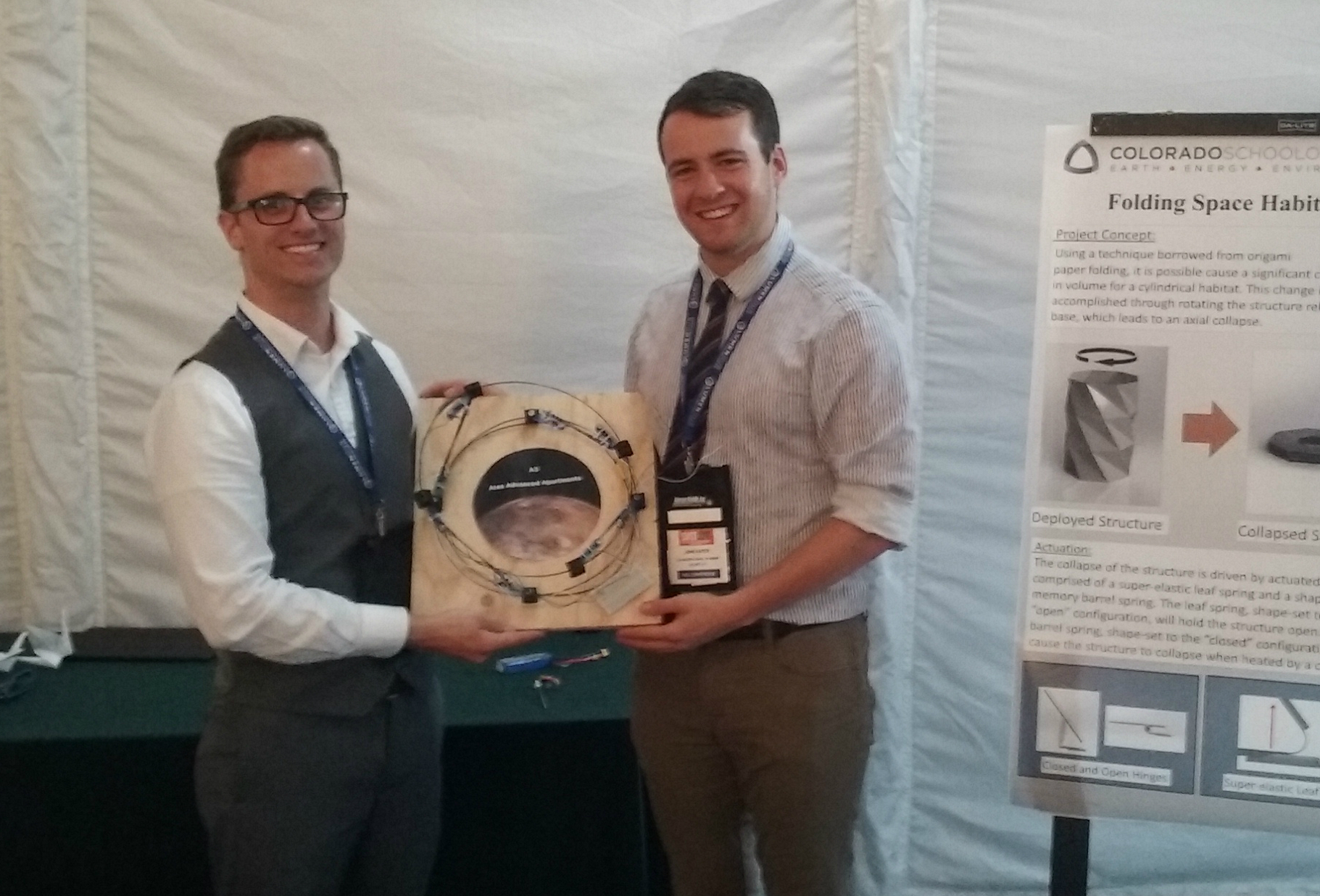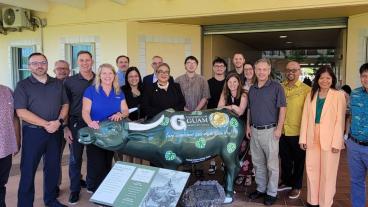 A team from Colorado School of Mines took first place in the 2nd CASMART Student Design Challenge for its deployable Mars orbit habitat design and model.
A team from Colorado School of Mines took first place in the 2nd CASMART Student Design Challenge for its deployable Mars orbit habitat design and model.
Ares Advanced Apartments, or A³, was one of four Mines teams to participate in the competition. Teams presented their designs at the ASM International 2017 Conference on Shape Memory and Superelastic Technologies May 15-19 in San Diego.
A³ won for best hardware design, one of two award categories at the CASMART challenge. CASMART is the Consortium for the Advancement of Shape Memory Alloy Research and Technology.
“In just a few months, the A3 team designed and built a functional model using two types of shape memory alloys,” said Othmane Benafan, CASMART executive chairman and a materials research engineer at NASA. “It is remarkable how they quickly learned about these materials, performed the required engineering analysis and applied it to building hardware – a Challenge-winning hardware.”
The students created the collapsible Mars space habitat as part of their coursework for Engineering with Smart Materials (MEGN 498/598), taught by Aaron Stebner, Rowlinson assistant professor of mechanical engineering and materials science.
In the class, students get experience working on projects involving shape memory alloys and other smart materials. SMAs are metals that can be triggered to go to a memorized shape through a temperature change or change in force.
“The exciting thing about this course and the competition is it gets students outside of the box,” Stebner said. “Most of what they learn and apply in the course can’t be found in a standard textbook, and they also get direct mentorship from industry and NASA.”
A³’s collapsible Mars habitat utilized two kinds of SMA springs -- superelastic leaf springs and shape memory effect barrel springs -- to create an origami-folding structure.
“Just naturally, the whole habitat opens without any power required,” said team member Peter Caltagirone, a mechanical engineering master’s student. “We didn’t want to need constant power to keep it open. So, once current is applied through the springs, they heat up, causing them to close and the whole system would collapse.”
The structures were required to collapse from 4 feet by 4 feet by 7 feet to 1 foot by 1 foot by 0.3 feet -- and weigh no more than 2 pounds.
“It’s a pretty big difference especially when you look at the habitat that's on the International Space Station -- the BEAM module weighs one and a half tons and doesn’t expand or collapse nearly that much,” Caltagirone said. “The goal was to use smart materials in order to accomplish significantly more collapse and weight reduction than the BEAM is capable of.”
Caltagirone and mechanical engineering undergraduate student John Kater represented the A³ team in San Diego. Other team members were Travis Canney, Collin Hall and David Schack.
Before their presentations, Caltagirone and fellow Mines students also had a chance to attend conference sessions and network with other conference attendees.
“It was a really cool experience to get to learn a lot more about smart materials,” Caltagirone said. “Really, people just don’t know a lot about smart materials and shape memory alloys specifically. They’re almost worried to use them because they don’t understand how they work, but they have some really cool properties.”
Established in 2007, CASMART promotes the growth and adoption of shape memory alloy technologies through achieving new understanding of the materials, fostering dissemination of technical knowledge and facilitating application of that knowledge. The consortium features 20 industry, academic and government organizations, including founding members Boeing, NASA Glenn Research Center, NASA Langley Research Center and Texas A&M University.
CONTACT
Emilie Rusch, Public Information Specialist, Communications and Marketing | 303-273-3361 | erusch@mines.edu
Mark Ramirez, Managing Editor, Communications and Marketing | 303-273-3088 | ramirez@mines.edu



